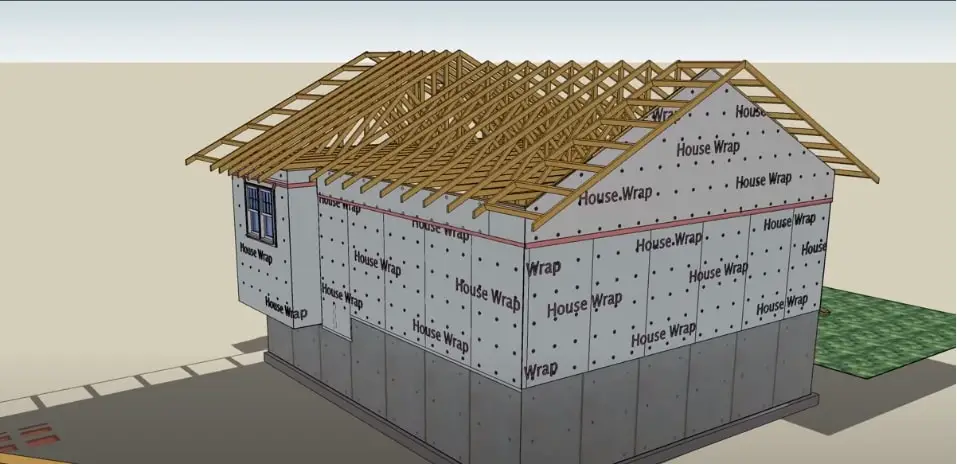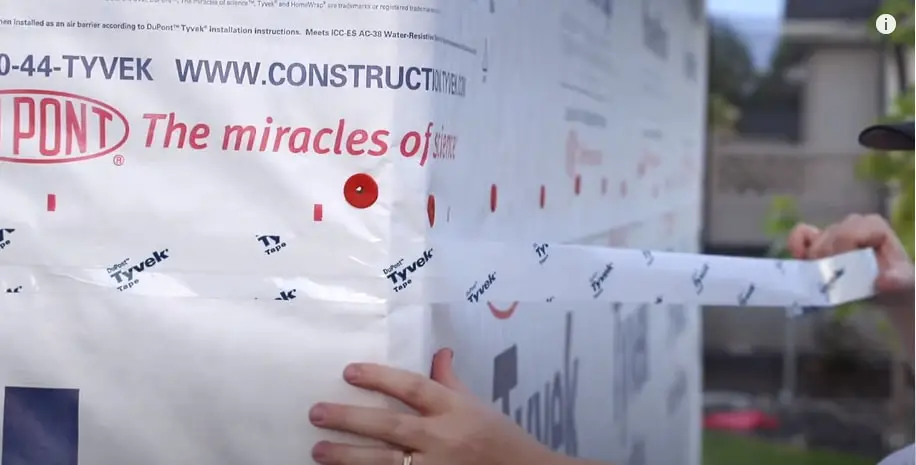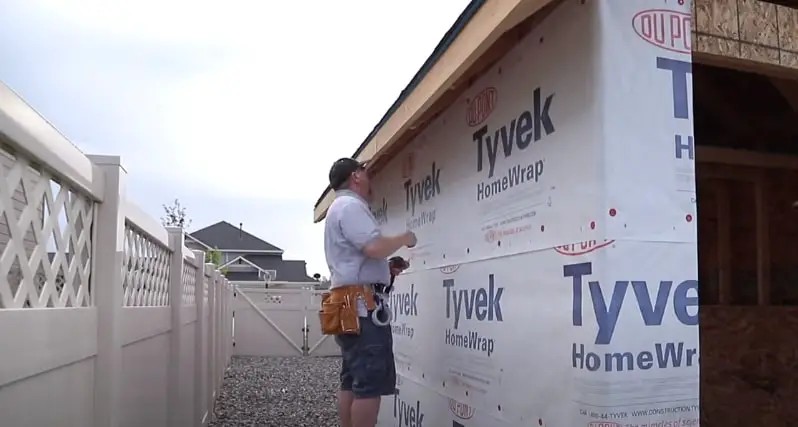You might need one to three layers of house wrap, depending on a few factors, such as weather, siding type, codes regarding your area, the purpose of your building, etc. As you already might know, when it comes to wrapping your house, it’s not a one-size-fits-all situation.
But I have made a table to give you an overall idea. Of course, I will go through the aspects in detail in the later sections.
| Factors | Situations | Recommended Layer |
| Weather | 1. High humidity, heavy rainfall, or snowfall 2. Moderate humidity, light rainfall, or snowfall | 1. Two or 2+ 2. One is enough |
| Siding Type | 1. Stucco, brick, or other air-permeable 2. Vinyl, wood, or other air-tight | 1. Two or 2+ 2. One is enough |
| Codes | Local building codes | Minimum one |
| Energy Efficiency | To create a more effective thermal barrier | Multiple layers (Maximum 2) |
| Design | Buildings with many corners or unusual shapes | It may require additional layers. Better to consult with an expert |
Quick Jump
4 Factors to Determine Layers Of House Wrap Are Needed

You can’t just decide how many house wraps you need just by looking at your home. There are some factors to consider, and you must consider these. I will briefly go through these factors to give you an understanding.
Factor #1: Climate and Weather Patterns of Where You Live
The type and amount of house wrap required will highly depend on your region’s moisture, wind, rain, and temperature changes. As you might know, to prevent moisture from seeping through the walls, you might need multiple, two, or three layers of house wrap.
On the other hand, if you live in a place with always high winds or frequent storms, you might need durable or adhesive house wrap to prevent it from tearing.
Factor #2: Siding Type
I’m sure you had to go through different types of siding materials when you built the house. And, as you might know, not all the types have similar levels of air-tightness and water resistance.
As a result, depending on these levels, they affect how much house wrap is needed. These are not air-tight if your siding is made of stucco and brick. Yes, you will need an extra layer because the siding can’t deal with strong wind.
Factor #3: Codes and Regulations
Building codes and regulations can dictate the minimum requirements for house wrap installation in your area. Of course, all these codes are implemented to ensure homes’ safety and structural integrity.
While some building codes may only require a single layer of house wrap, others may specify a certain thickness or type of house wrap to be used. That’s why it’s worth checking if your local regulations have specific guidelines or recommendations.
Factor #4: Design and Purpose
I don’t think I need to explain why it’s crucial to maintain the proper design and purpose of your building; also, consider all the necessary things, including house wrap.
Sometimes, buildings with many corners or unusual shapes may require additional layers of house wrap to provide adequate coverage. Besides, a commercial building may require more layers of house wrap than a residential building due to higher occupancy levels and a greater risk of moisture buildup.
These are more or less crucial factors you must consider, impacting the layers of house wrap you will need. But there are less important, but still important, factors that you must consider.
A few years back, I was helping a friend build his house, and he wanted maximum energy efficiency. As we studied further, we realized he needed to use multiple layers of house wrap to create a more effective thermal barrier, and three would be optimal.
And, of course, I understand the urge to build the perfect multilayered house wap for added protection. Still, it also depends on the budget, and sometimes simplify installation process is also what we seek.
What Type of House Wrap is Best?

I won’t be surprised if you already know this, but still, I want to go through a few options and their aspects. That way, it will give you a proper understanding in case you missed anything.
Here is a table including all the high-class house wrap types and their aspects.
| Types | Aspects |
| Polyethylene (PE) | # Suitable for most climates and building types. # Good moisture resistance and breathability. # Available in different thicknesses and grades. # Cost-effective. |
| Polypropylene (PP) | # Excellent breathability and moisture resistance. # Suitable for hot and humid climates. # Resistant to UV damage and tearing. # Typically more expensive. |
| Permeable Membrane | # High breathability and moisture vapor transmission. # Suitable for humid climates. # Prevents condensation. # Requires an additional weather-resistant barrier (WRB) in regions with significant rain or wind. |
| Non-Permeable Membrane | # Excellent air and moisture barrier. # Ideal for cold climates. # Reduces heat loss and drafts. # Requires proper installation. |
| Fabric | # Durability and tear resistance. # Breathability while preventing moisture penetration. # Suitable for areas. # Generally more expensive. |
Tips for Installing the House Wrap to Maximize Its Effectiveness

Calculating the number of layers won’t be enough if you don’t take proper measurements to utilize the maximum effectiveness of the house wraps. That’s why I arranged all the information I know to provide you with a proper installation process.
Before starting the process, you must clean it thoroughly, remove debris or protrusions, and repair damaged areas. A smooth, well-prepped surface will ensure a tight seal and prevent potential vulnerabilities.
After that, follow these things to utilize the effectiveness properly.
- Pay attention to the overlaps between the sheets when installing the house wrap. You must position them correctly, ensuring the upper layers overlap the lower ones.
- Avoid stretching the wraps excessively. Doing that can cause undue stress on the material, leading to potential tears or gaps.
- Always use high-quality tape or adhesive designed for house wrap to seal the seams securely.
- To ensure that the water is effectively directed away from vulnerable areas, you should properly integrate flashing with the house wrap and integrate it into the surrounding building components.
- Inspect the house wrap regularly to ensure its integrity. If you see any signs of damage, such as tears, punctures, or detachment, fix it ASAP.
- Proper ventilation behind the house wrap is always a good idea to facilitate moisture evaporation and prevent condensation buildup.
Wrap Up
I hope now you know how many layers of house wrap you need. It’s always a good idea to use multiple if you think it’s not a hassle and go that extra mile to add an extra layer of protection for your house.
Two layers are usually enough, but depending on situations and factors, you might need three, but not more than that. Let us know if you are still struggling to figure it out, and I will get back to you.
Good luck!

Chino is an accomplished Founder and Home Improvement Contractor with a passion for transforming living spaces into beautiful, functional, and comfortable homes. With years of experience in the industry, he has established himself as a reputable expert in the field, earning the trust and admiration of numerous clients.
